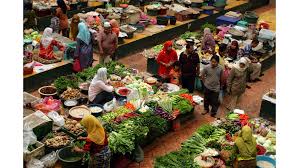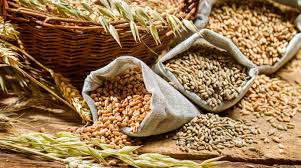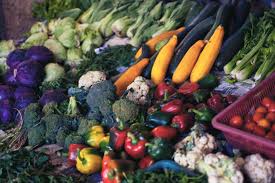Efficiency in the agricultural industry is the most frequently used measure of market performance. Marketing efficiency is a common objective of farmers, food marketing firms, consumers, and other participants. Efficiency is an engineering terminology measured as a ratio of output to input.
For example, the efficiency of automobiles is expressed as kilometers (output) per liter of petrol used (input). Marketing efficiency can be defined as the maximization of the ratio of output to input in marketing.
Marketing inputs include the resources used in providing marketing services such as labor, packaging, finance, etc. On the other hand, marketing outputs include time, form, place, and the possession satisfaction consumers derive from the marketing of the product.
Thus, marketing inputs are the costs of providing services, whereas marketing outputs are the benefits or satisfaction created, or the value added to the product as it passes through the marketing system.
Efficiency ratios can be expressed in physical terms or monetary terms. If monetary terms are used, the concept becomes a ratio of benefits to costs. For example, in moving paddy rice through the market until the consumer buys it as milled rice, the paddy is transported, processed, and possibly stored.
The cost of these functions makes up the input cost of marketing, whereas the value of the milled rice obtained from the paddy is the output of marketing.
Marketing Efficiency (ME) Formula
Marketing efficiency (ME) can be expressed as:
ME = Output / Input
It is easier to estimate the input cost of marketing than the output of marketing. While the input cost is simply the sum of all the prices of resources used in the marketing process, the best measure of output (consumer satisfaction) is the price consumers are willing to pay in the market for farm products with marketing utilities.
For example, if consumers are willing to pay 5 kobo more per orange for processed orange juice than fresh fruits, it could be inferred that the processing of fresh orange into juice adds 5 kobo of form utility.
Read Also: Chickpea/Gram Pea Nodules: Economic Importance, Uses, and by-Products
Ways to Achieve Marketing Efficiency

Marketing efficiency could be achieved in any of the following ways:
- Output remains constant while input decreases.
- Output increases while input remains constant.
- Output increases more than the increase in input.
- Output decreases more slowly than the decrease in input.
The higher the efficiency ratio, the higher the marketing efficiency. Any change in the marketing process that reduces the input cost of accomplishing a particular marketing service without reducing consumer satisfaction is certainly an improvement in marketing.
On the other hand, any change in the marketing process that reduces consumer satisfaction with the end product may reduce marketing efficiency.
Example of Marketing Efficiency Calculation
Let us consider the following example: In two markets A and B, the total marketing costs incurred for the same product are N45,000.00 and N48,000.00 respectively. The value added to each product through marketing is N10,000.00.
In Market A, the cost of marketing is N45,000.00, but the value added through marketing is N10,000.00.
Marketing Efficiency = N10,000 / N45,000 = 0.22
In Market B, the total cost of marketing is N48,000.00, but the value added through marketing is N10,000.00.
Marketing Efficiency = N10,000 / N48,000 = 0.21
From the calculations, Market A is more efficient than Market B.
Read Also: Aloe Vera Margins: Economic Importance, Uses, and by-Products
Types of Marketing Efficiency

There are two types of marketing efficiency, namely operational efficiency and pricing efficiency.
1. Operational Efficiency: Operational or technical efficiency measures the productivity of performing marketing services concerning the cost of providing marketing services. Output per man-hour is one often-quoted productivity ratio for operational efficiency. Sales per worker hour are calculated to monitor operating efficiency in farm supply chains.
Operational efficiency assumes that the essential nature of the output of goods and services remains unchanged, and focuses on the costs of inputs used in doing the jobs. For example, if a new method of storing grains reduces labor costs, the grains could be stored more efficiently at a lower cost.
A new method of crating tomatoes might not only increase the quantity handled in a given space but also reduce damages during transportation. All these contribute to improved operational efficiency.
2. Pricing Efficiency: Pricing efficiency assumes a physical input-output relationship that remains constant. It is concerned with ensuring that prices reflect the costs of moving the outputs through the marketing system. The prices that consumers pay should adequately reflect marketing and production costs.
In a perfectly competitive economic environment, prices will adequately reflect all such costs. Pricing efficiency refers to the improvement of the operations of buying, selling, and pricing aspects to reflect consumer preferences. Pricing efficiency could be enhanced through grading of products, standardizing, quality control, and reliable market information.
On the other hand, if the market is dominated by a few firms that conspire to maintain high prices, this could lead to pricing inefficiency. Other factors that could give rise to pricing inefficiency include (i) lack of information to consumers, and (ii) the presence of firms that dominate a market due to location or excellent performance. In such cases, the prices paid by consumers may not adequately reflect the cost of production and marketing.
The first yardstick for ensuring consumer satisfaction in the marketing process is making available to them the products they will be prepared to pay for in the marketplace.
In marketing, consumer satisfaction is met by having products available at the right place through storage, by having products available at the right time through processing, and by having products available in the right form.
Conditions for Pricing Efficiency
Three basic assumptions must be fulfilled for pricing efficiency to take place:
- The consumers must be provided with numerous alternatives from which they can choose.
- The price must reflect the cost of providing the goods and services.
- Free entry into and exit from the market must be ensured so that consumers’ freedom of choice is not restricted.
Thus, pricing efficiency results from the nature of competition and the balance of economic power that exist in the marketing system. A monopoly market structure will certainly adversely affect the pricing efficiency of the market.
Estimation of Pricing Efficiency
Marketing efficiency could be estimated by analyzing price behavior over time and space. In a perfect market, price differentials over time must equal the cost of storage. If the difference in price over time is greater than the storage cost, it indicates pricing inefficiency.
Over space, the law of market area states that the price spread between two markets that trade with one another should not exceed the cost of transfer between the locations. Where price differentials over space are in excess of transfer costs, it reflects pricing inefficiency.
Reasons for Low Market Integration in Farm Management
Some common reasons for low market integration include:
- Lack of perfect mobility due to transport costs.
- Existence of transport bottlenecks such as bad roads.
- Uncertainty on the duration of price differences between markets.
- Lack of information about market conditions.
- Lack of scientific grading of produce, resulting in price disparities between equivalent grades in the two markets.
Do you have any questions, suggestions, or contributions? If so, please feel free to use the comment box below to share your thoughts. We also encourage you to kindly share this information with others who might benefit from it. Since we can’t reach everyone at once, we truly appreciate your help in spreading the word. Thank you so much for your support and for sharing!
Read Also: Other Methods/Technologies for Biomedical Waste Treatment






